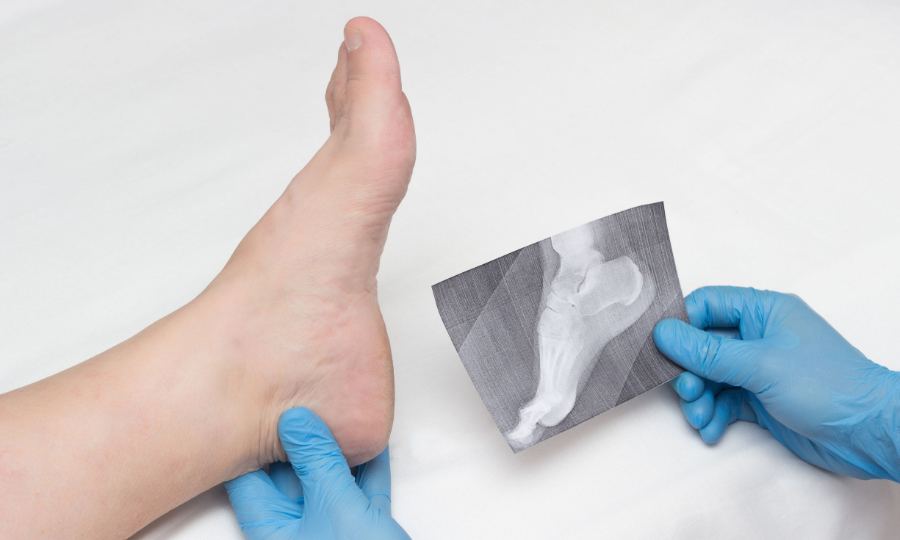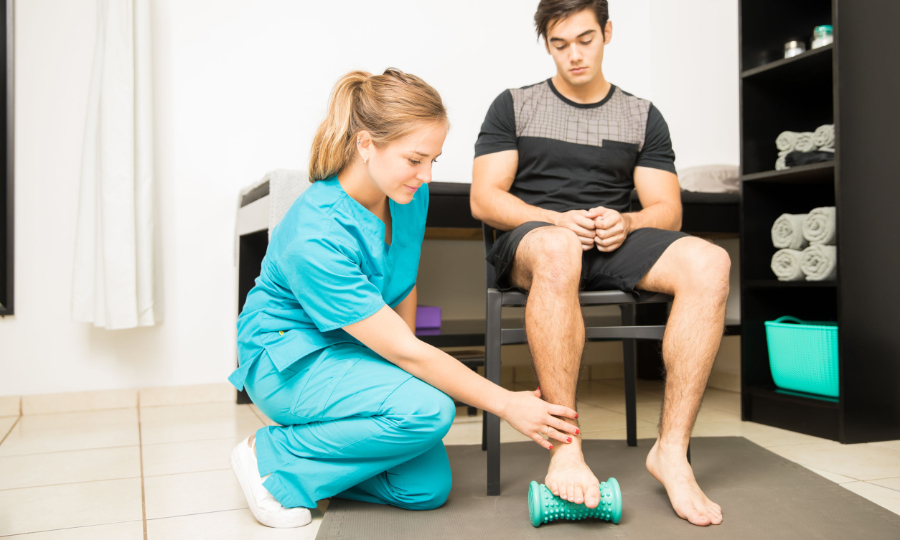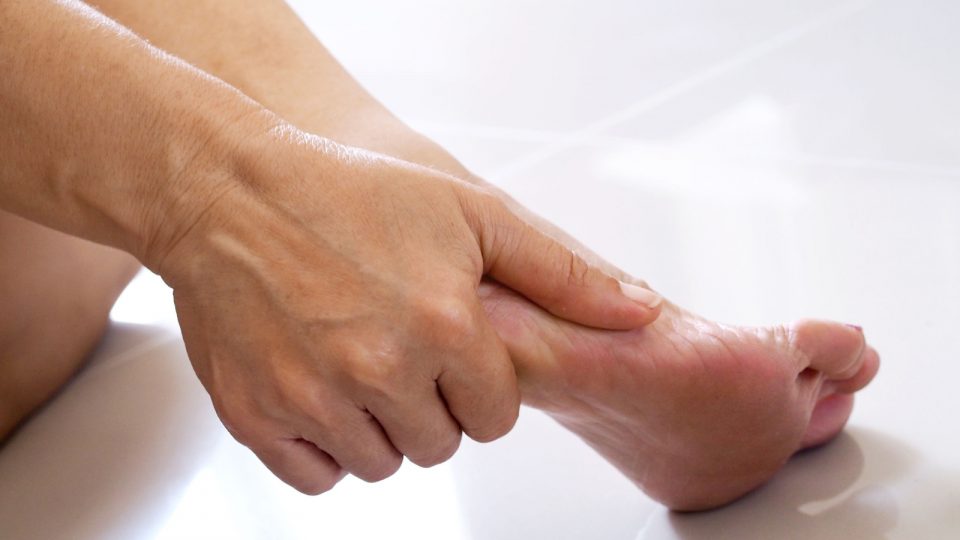Ever experienced a stabbing pain in your heel when running? That’s your plantar fascia talking to you.
The plantar fascia is the thick band of tissue that runs under your foot, connecting your heel to your toes. This ligament is meant to be spongy and cushion your feet as you walk or run. It acts as a shock absorber and supports your arch too.
Because it can take such a pounding, the ligament is prone to causing problems. In fact, it’s one of the most common causes of pain for a runner. Thankfully, you aren’t alone, and you won’t have to suffer for too long as there are ways you can treat this type of foot pain at home.
By understanding the condition and knowing what action to take, you can soon go back to enjoying pain-free running.
Table of Contents
What Causes Plantar Fasciitis?

Plantar fasciitis is usually caused by general wear and tear of the ligament. Many runners experience it when they start to increase their distance in training. A long run – further than your body is used to – can put a lot of strain on the ligament.
Unfortunately, the exact cause of the condition is unknown. You may run a marathon and be absolutely fine, but find the next time you train for a 5k, you have problems. It can all depend on your stress levels, what else is going on in your life, how much time you spend on your feet during the day, and other injuries you may have suffered in between the two training periods.
Experts agree that you’re at more risk of getting plantar fasciitis between the ages of 40 and 70, and it is more common in women than men. Additionally, the more you weigh, the more likely you are to develop the condition due to more pressure being placed on the ligament each day.
In some instances, being inactive for an extended period can lead to plantar fasciitis. If you’re recovering from a major injury and have had to spend a few months resting, the ligament can get stiff and cause pain as you start to use the foot again.
What Are The Symptoms?
Studies have argued over whether plantar fasciitis is an inflammation of the ligament or degeneration of it. However, the symptoms remain the same.
It starts with a stiffness in the heel and underneath the foot and can develop over time into a definite pain shooting through the area. Some describe this as burning pain, others as a stabbing pain, and as a general ache. It all depends on how severe the condition is.
The condition’s start is usually quite gradual – a general stiffness, especially in the morning right after you get out of bed and then again after prolonged time on your feet (a 3-mile run will do it). As the condition worsens, you may begin to feel pain or at least stiffness in the heel while you’re running.
How To Treat It

While it might be a very painful condition, you can get through it and out the other side fairly quickly. The key is to follow the routine and listen to your health care professional.
1. Take A Break
The first thing you need to do is rest.
The strain on the ligament will not heal if you don’t give it time to do so. During your rest period, stay off your feet as much as possible. You can also apply ice to the underside of the foot and heel for 10 to 20 minutes, two or three times a day. Consider elevating your foot when sitting and wearing a compression sock to stimulate blood flow and healing.
2. Stretch It Out
Stretching should be a vital part of any runner’s training program. When you’re suffering from plantar fasciitis, it’s even more important. Start with your calf muscles, and be sure to do this stretch after warming up each time you run.
Face a wall and lean forward in a lunge position, with the injured foot extended behind you. Keep that foot flat on the ground and the leg straight as you lean into the wall. This will pull from the base of your heel through to your calf muscle and relieve the pain almost immediately.
3. Roll Your Feet
A hockey ball, sturdy piece of PVC piping, rolling pin, soda bottle filled with water and then frozen, or even a knobby foam roller will all work as a roller.
Place your rolling object under the foot and apply pressure as you move it back and forth for about two minutes at a time. Make sure you do this seated so as not to put too much pressure on the foot.
4. Workout Those Toes
Seated again, try picking up marbles or scrunching up a towel with your toes. Make sure you’re barefoot and then place the object you’re working with under your foot.
The scrunching and lifting motion in the front of your foot will work all of the muscles and ligaments from your toes through to your calf muscles. Start slowly with only five repeats with the towel and work up to picking up 20 marbles one at a time.
5. Start Again Slowly
After a few days, you should notice that the pain and stiffness have subsided. If it has, it’s okay to start running again – but slowly and short distances only. It’s important to keep up with the other exercises and stretches as you build up your strength again.
Medical Help
If things aren’t healing properly, it’s important to see a physiotherapist, a podiatrist, or a doctor. They will be able to see if there’s anything specific causing the problem. New, better-cushioned running shoes or orthotic inserts may be the answer. A course of anti-inflammatory medication may be needed to help get you back on track.
Plantar Fasciitis should not mean the end of your running career, but it could put a dent in your training program. Targeted exercises to relieve the pain should always be your first course of action, and don’t wait too long to get started. The quicker you begin treating the condition, the less time you’ll have to spend in recovery.
How should I heal my plantar fasciitis?
Rest and give time to heal. You can elevating your foot when sitting and wearing a compression sock to stimulate blood flow and healing.
What is the fastest way to cure plantar fasciitis?
1. Rest 2. Stretch It Out 3. Roll Your Feet 4. Medical Help
What triggers plantar fasciitis?
Plantar fasciitis is caused by general wear and tear of the ligament. Many runners experience it when they start to increase their distance in training.
Should you continue to exercise with plantar fasciitis?
Take it slow, remember to stretch and perform foot exercises to build the strength before you walk or run.





